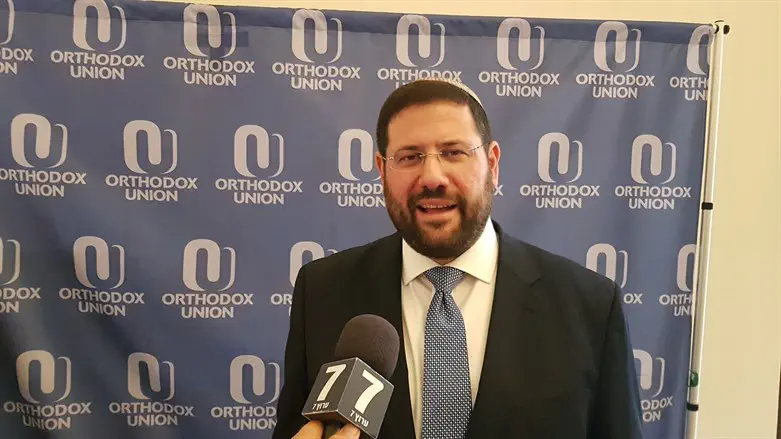
Over the course of the next four parshiot we will delve into every detail of the Mishkan - literally down to the nuts and bolts. But while the detailed descriptions of its measurements, materials and symbolism may help us appreciate the Mishkan’s magnificence, it stands in stark contrast to the creation of the world, which is described in just 30 psukim in Beresheit. What is so significant about the Mishkan that the Torah spends more time discussing it than it does on briat HaOlam?
I heard a beautiful idea by my dear friend Rav Yoni Lavi, the founder of the OU Israel Chaverim Makshivim hotline. For those who do not know, the Chaverim Makshivim Hebrew hotline is a volunteer-run anonymous hotline led by 40+ clinical professionals around the country to support religious teens and parents looking for practical and effective tools to cope with everyday challenges. Following conversations with callers, Chaverim Makshivim posts both questions and answers anonymously on its website, so that others can gain from the responses provided. To give you an idea, here are some of the questions our volunteers receive:
- I want to enlist in the IDF but my parents are against it
- Ever since my family made aliyah I’ve worried about how my kids are acclimating - I don’t have the Hebrew skills to help them with their homework or projects
- My son has gone off the derech and he’s been our focus for years - I’m now worried that my other kids are slipping through the cracks
Rav Lavi points out that the Mishkan mirrors the Jewish home: our sinks symbolize the “kiyor” where we wash our hands every day; our table is our “shulchan” where we provide for our family and guests; our Shabbat candles are our “menorah,” and our private rooms are “Kodesh Hakadashim.” With this in mind we can answer our original question. Just as the Torah spends a significant amount of time detailing the many facets of the Mishkan, we too must focus our time and attention on building and fortifying every detail of our home and family, spanning the physical, emotional and spiritual nuts and bolts.
It is interesting to note that trained staff running both OU Israel Youth Centers and The Zula have identified a pattern among at-risk teenagers in that the vast majority do not feel they receive enough attention at home. As a result, many teenagers go to extreme lengths to get attention elsewhere despite the risks involved. Thankfully, those who enter OU Israel Youth Centers or The Zula are the sole focus of our trained therapists, mentors and staff, who have the capacity to shower them with the attention and love they need to create stability in their lives.
As a parent of nine I have experienced how hard it is to juggle external pressures with the needs of my wife and children. There are times that I am pulled away from my family for extended periods of time due to my responsibilities at OU Israel and I can lose focus on what is most important. For me, this parsha serves as a critical reminder that Hashem gifted me with my beautiful family and that I have a responsibility to prioritize their needs.
With Purim on the horizon there is one more element parents should consider. Purim is a time of joyful celebration around the country. Between the delivery of mishloach manot, megillah reading, and preparing the seudah, parents can easily become distracted. However, on Purim unsupervised teenagers may find themselves entering dangerous environments. On Purim, parents must therefore remain vigilant, aware of where their children are at all times to keep them safe.
As we make our way through the next four parshiot, parents and educators have an opportunity to realign priorities to make sure our children remain at the center of our lives. May HaKadosh Baruch Hu give us continued clarity and insight so that we can identify, prioritize and support the needs of our families and build homes reflecting the values that the Torah teaches us.
Rabbi Avi Berman is the CEO of the OU Israel organization that operates the Hezroni Zola Club in Jerusalem and dozens of youth centers located in the social and geographic periphery of the State of israel.